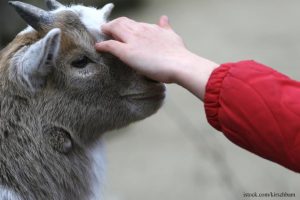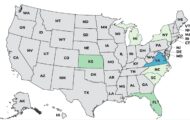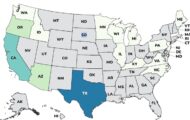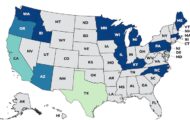Petting zoo E. coli outbreaks like the one in Minnesota this summer have been studied in the U.S. for decades. A watershed outbreak 10 years ago at the North Carolina State Fair was the worst in recent history. A total of 108 case patients were identified, including 41 with laboratory-confirmed illness and 15 who experienced kidney failure as part of life-threating complication known as E. coli hemolytic uremic syndrome (HUS).
 Within months after the North Carolina outbreak, in March 2005, the National Association of State Public Health Veterinarians (NASPHV) published new recommendations for operators that are still viewed as important safety standards. At the time, the Centers for Disease Control and Prevention (CDC) was saying that its own control measures for petting zoos, published in 2001, should be revised to reduce disease transmission and prevent similar outbreaks.
Within months after the North Carolina outbreak, in March 2005, the National Association of State Public Health Veterinarians (NASPHV) published new recommendations for operators that are still viewed as important safety standards. At the time, the Centers for Disease Control and Prevention (CDC) was saying that its own control measures for petting zoos, published in 2001, should be revised to reduce disease transmission and prevent similar outbreaks.
Now it’s common for E. coli lawyers to investigate operators when there is an outbreak to determine how closely they followed the recommendations. That will happen to operator Zerebko Zoo Tran if lawyers bring a petting zoo E. coli lawsuit in Minnesota.
Zerebko petting zoo was linked with this summer’s outbreak of E. coli O157:H7 that followed the petting zoo’s trail from Nashwauk, to Polk County, followed by the Rice County Fair in Faribualt and then the Olmsted County Fair in Rochester. A total of 13 people were confirmed as case patients of the outbreak and the Minnesota Department of Health said two of the victims were hospitalized with HUS.
The North Carolina State Fair outbreak in 2004, where there were actually two separate petting zoos, was studied intensely. A key finding was that petting zoo B — where all the illnesses came from — contained approximately 100 goats and sheep in an area where visitors could have extensive contact with animals and their bedding, including manure.
Among children under 6 who visited petting zoo B, illness was associated with touching or stepping in manure; falling or sitting on the ground; and use of a pacifier or “sippy” cup or sucking on one’s thumb while in the petting zoo. Reported alcohol-based hand sanitizer use was not protective, the studied found, but reported awareness of E. coli risk by adults who accompanied children was protective, the studies found.
The No. 1 takeaway by the CDC, published in an in-depth petting zoo E. coli report, was that young children should be restricted from directly entering open-interaction areas of petting zoos. Here’s a partial list of recommendations published by the state health veterinarians and endorsed by the CDC:
- No food or beverages should be allowed in animal areas. In addition, smoking, carrying toys, and use of pacifiers, spill-proof cups (“sippy cups”), and baby bottles should not be permitted in animal areas.
- Manure and soiled animal bedding should be removed promptly. Animal waste and specific tools for waste removal (e.g., shovels and pitchforks) should be confined to designated areas restricted from public access.
- Children should be closely supervised during contact with animals to discourage contact with manure and soiled bedding. Hand-to-mouth contact (e.g., thumb-sucking) should also be discouraged.
- Appropriate hand washing should be required.
- Trained staff should be present in areas where animal contact is permitted to encourage appropriate human-animal interactions, reduce risk for exposure.
- If feeding animals is permitted, only food sold by the venue for that purpose should be allowed. Food sold for animal consumption should not be eaten by humans and should not be provided in containers that can be eaten by persons (e.g., ice cream cones).
- Providing transition areas for visitors to pass through when entering and exiting animal areas is critical. The transition areas between animal and nonanimal areas should be designated as clearly as possible. In these areas, information should be provided regarding the 1) prevention of infection and injury and 2) location of hand-washing facilities and instructions for visitors to wash their hands upon exiting.
- Signs informing visitors that they are entering an animal area should be posted at the entrance of transition areas. These signs should also instruct visitors not to eat, drink, or place their hands in their mouth while in the animal area.
- Exit transition areas should be marked with signs instructing the public to wash their hands. Hand-washing stations should be available and accessible to all visitors, including children and persons with disabilities




